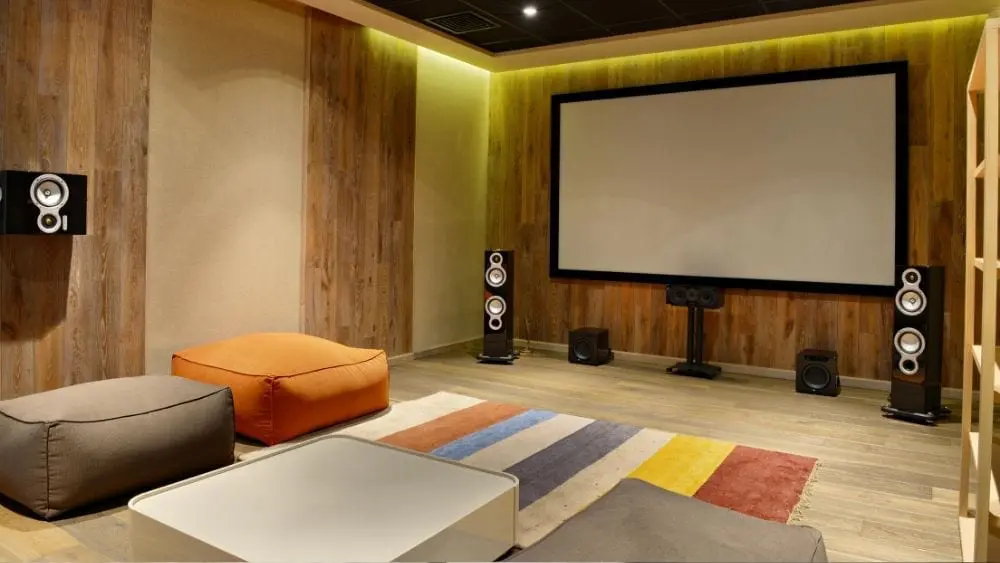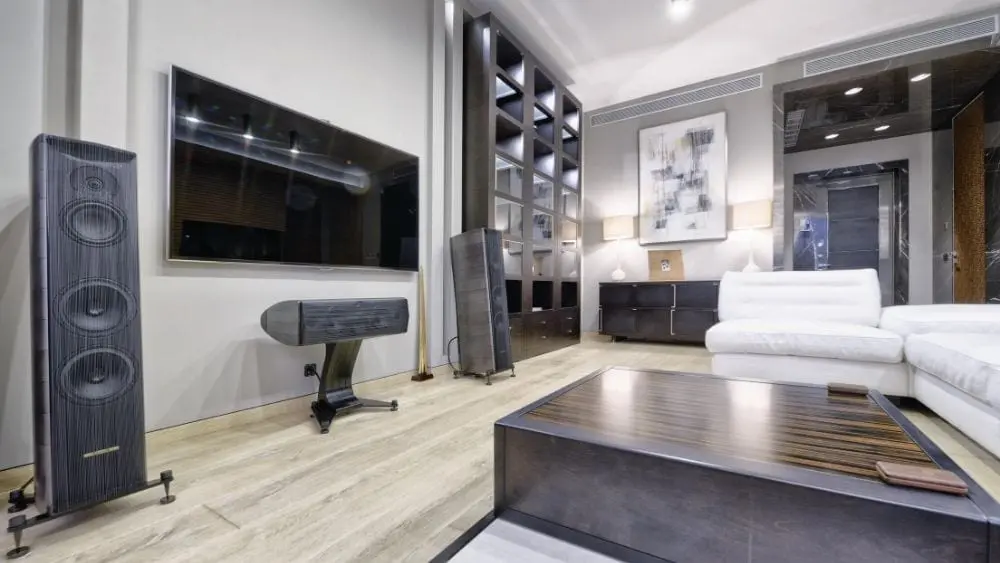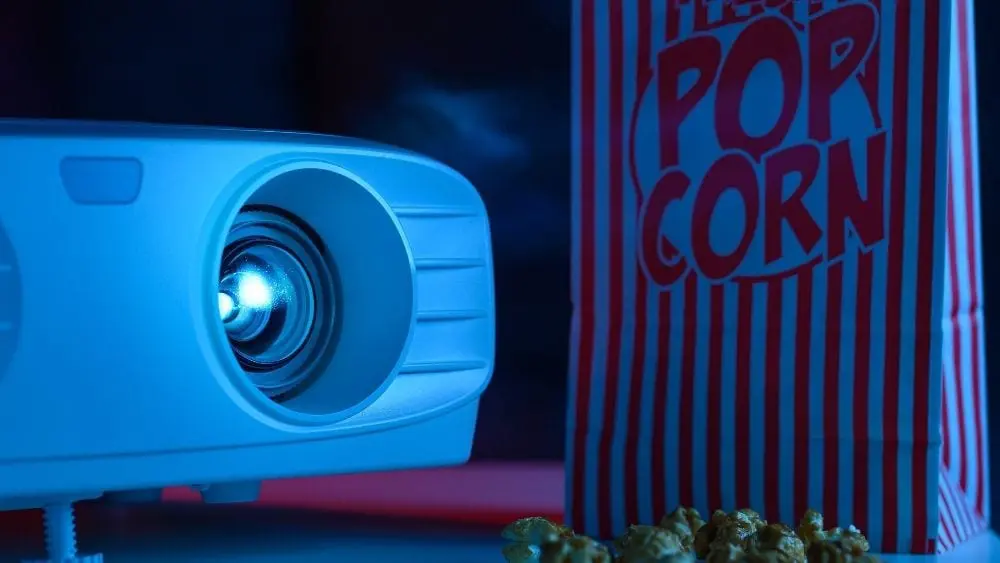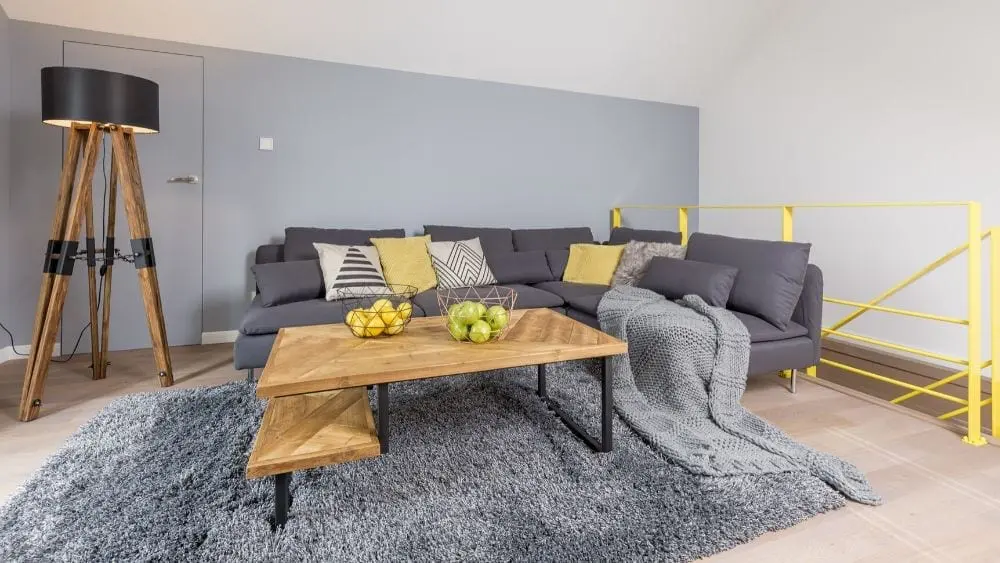Most of us enjoy a trip to the movies, but the crowds, lines, and uncomfortable seats (not to mention the pricey tickets and snacks) might make that all seem like it’s not really worth it anymore, especially with streaming services offering a plethora of choices right to your own TV. Why not have the best of both worlds, and incorporate a home theater into your home?
Here’s everything you need to know about creating the perfect home theater.
Overall System

A home theater system consists of an AV receiver, speakers, subwoofer, and all the wiring needed to create the full movie-watching experience. But there are so many options, how do you pick one?
That really comes down to your needs, the space, and your budget. If you get into the specifics, you’ll start hearing a lot of terms about sound quality. If you’re not a sound snob and are used to just hearing audio through a TV speaker, the specific sound quality won’t mean much. Anything will be an improvement, so you don’t have to sweat it too much.
However, if you are a sound snob and want crystal-clear audio in your home theater, you’ll want a home theater system that supports Dolby Atmos, the latest and greatest codec in sound quality. Larger systems, perfect for large home theaters, can cost a pretty penny; but smaller bundles can still provide the high quality you’re seeking. The more elegant the system – think ceiling and tower speakers and multiple subwoofers – the more it will cost.
But hey, if you’ve got the means, why not?
Looking to elevate your sound game, but not quite to those levels? Investing in a subwoofer and soundbar combo is a great place to start. The next step up would be a system that supports Dolby Digital or DTS sound systems. Again, these are still great sound quality options, and often come at a much more affordable price.
TVs

Of course, the perfect sound doesn’t mean much if you’ve got poor image quality. But choosing which TV is best can be as difficult, if not more so, than deciding on a home theater system. There are several factors that can affect this decision, including the size of the room, how far you’ll be sitting from the screen, and what image quality you’re looking to buy.
Do you have a room that allows you to sit fairly far back from a screen that can loom over you? You can go as large as an 86” TV, but to comfortably watch on a screen this size – that is, to keep from craning your neck or constantly swiveling your head from side to side to get the full picture – you’ll need at least 8 ½ feet from TV screen to seating. And that’s just the bare minimum; adjusting the image quality means you could need even more space.
Sounding unmanageable? Bigger isn’t always better if the TV won’t physically fit in your room.
A 65” TV can get the job done, and a 50” TV will suffice under the right conditions. Any smaller, and you’ll probably lose the movie theater vibe entirely. There are several calculators online to help you determine what screen size is best for your room (this is the one we used), which can be incredibly helpful.
Projectors

Perhaps you want to forgo the TV altogether and embrace the movie-theater quality projector screen. Using projectors on blank walls, both in home theaters and for outdoor movie nights, has become common practice for plenty of homeowners.
There are plenty of options out there, and a crowd favorite is the pricey but reliable Epson home theater projector. There are plenty of smaller options depending on your needs, and even portable projects.
If you don’t have a blank wall to project onto, you’re going to want to invest in a projector screen as well. A manual pull-down screen will probably bring back some nostalgia (or unwanted memories) of younger days in grade school. There are grander, more permanent screens that are mounted directly to the wall; flank the screen with heavy velvet drapes tied off with gold cord for a classic theater experience.
Seating

Despite everything we’ve talked about so far, it’s not all about technology when it comes to home theaters. In fact, you can have the best visual and audio quality in the world and be completely unsatisfied if you’re not comfortable overall. The best way to combat that?
Comfy chairs and blankets, of course.
Go for the classic bean bag to really drive home the sleepover movie night vibe. A couple of these placed together and you’ve got a comfortable spot in which to cuddle up. For a little more support than these seats typically provide, a memory foam bean bag is ideal.
Another common feature in home theaters is a large sectional sofa with a storage ottoman, perfect for storing extra blankets and pillows when you’re truing extra hard to hide from the world. An upgraded option? A sectional that folds out into a futon for maximum space to stretch out and get comfy.
Add a soft fleece throw (or several) for a pop of color, or even a weighted blanket for deep relaxation! Whatever makes you most comfortable is definitely the choice you should make.
Home theaters are a luxury that have become more common, in part because it doesn’t always mean wheeling in movie theater chairs and having an IMAX-sized screen on to which you can project. Now, you can embrace movie theater vibes with a comfy couch, a solid TV, and some decent popcorn.
Which aspect of a home theater are you most excited about? Let us know in the comments, or share with us on social media!

Kian Zozobrado joined Builders Digital Experience (BDX) in 2019 as a content writer. A graduate of Southwestern University with a degree in English, Kian is passionate about the written word and making connections. Outside of work, Kian also serves as president of the Board of Directors for the Writers’ League of Texas.
 Home Gym Equipment to Help You Live a Healthier Life
Home Gym Equipment to Help You Live a Healthier Life